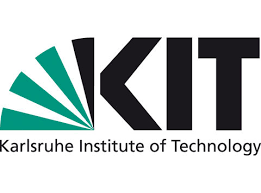Karlsruhe Institute of Technology: Efficient and versatile in a double pack
Stacking solar cells on top of each other increases efficiency. Together with partners in the EU project PERCISTAND, researchers at the Karlsruhe Institute of Technology (KIT) have now produced perovskite/CIS tandem solar cells with an efficiency of almost 25 percent – the highest for this technology to date. In addition, the combination of materials ensures lightness and versatility, so that the use of these tandem solar cells on vehicles, portable devices and foldable or rollable devices is also conceivable. The researchers present their work in the journal ACS Energy Letters.
Perovskite solar cells have come a long way in just ten years. In terms of efficiency, they can already be compared with the long-established silicon solar cells. Perovskites are innovative materials with a special crystal structure. Researchers around the world are currently working on making perovskite photovoltaics ready for practical application. Solar cells are more attractive to end users the more electricity they generate per unit area.
Efficiency can be increased by stacking two or more solar cells. If each solar cell absorbs a different part of the sunlight spectrum particularly efficiently, inherent losses can be reduced and efficiency increases. This indicates how much of the incident light is converted into electricity. Thanks to their versatility, perovskite solar cells are ideal as part of such tandems. Tandem solar cells made of perovskites and silicon have achieved a record efficiency of over 29 percent – significantly higher than that of individual cells made of perovskites (25.7 percent) and silicon (26.7 percent).
Combination of perovskites with CIS – mobility and flexibility
The combination of perovskites with other materials such as copper indium diselenide (CIS) or copper indium gallium diselenide (CIGS) promises additional advantages. This enables flexible and lightweight tandem solar cells that can be attached not only to buildings, but also to vehicles and portable devices. Such solar cells could even be folded or rolled for storage and extended when needed, for example on blinds or awnings, which protect from the sun while generating electricity.
An international team of researchers led by Dr. Marco A. Ruiz-Preciado and tenure-track professor Ulrich W. Paetzold from the Light Technology Institute (LTI) and Institute for Microstructure Technology (IMT) of KIT have now succeeded in using perovskite/CIS tandem solar cells with a peak efficiency of 24.9 percent (23.5 percent certified). “This is the highest reported efficiency for this technology and the first ever high efficiency achieved with a nearly gallium-free copper indium diselenide solar cell in a tandem,” explains Ruiz-Preciado. Reducing the amount of gallium leads to a narrow band gap of about one electron volt eV, which is very close to the ideal value of 0.96 eV for the bottom solar cell in a tandem.
Narrow Band Gap CIS Solar Cells – Low Bromine Perovskite Solar Cells
The band gap is a material property that determines the portion of the solar spectrum that a solar cell can absorb to generate electricity. In a monolithic tandem solar cell, the band gaps must be such that the two cells can produce similar currents to achieve maximum efficiency. If the band gap of the lower cell changes, the band gap of the upper cell must be adjusted accordingly; vice versa as well.
To tune the band gap for efficient tandem integration, high bromine perovskites are commonly used. However, this often leads to voltage losses and phase instability. Since the researchers at KIT and their partners use narrow-bandgap CIS solar cells for their bottom tandems, they can fabricate the top solar cells from perovskites with low bromine content, making them more efficient and stable.
“Our study demonstrates the performance potential of perovskite/CIS tandem solar cells and defines the basis for future developments that can further improve efficiency,” says Paetzold. “We have reached this milestone thanks to the excellent cooperation in the EU project PERCISTAND and especially thanks to the close cooperation with the Netherlands Organization for Applied Scientific Research.” Important preparatory work was also carried out in the national project CAPITANO, funded by the Federal Ministry for Economic Affairs and Climate Protection (BMWK) .

